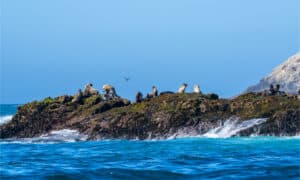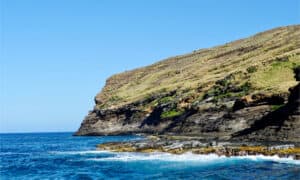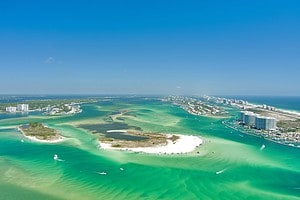Islands are some of the most beautiful places around the world since they are surrounded by water. These landmasses have great sunrises and sunsets and the potential for all sorts of time away from others. Although we might think of small landmasses when considering islands, the truth is that the largest islands in the world are quite sizable and contain a lot of the world’s population. Take a look at the 15 largest islands in the world and see how large they are, where they are located, and the population that lives on them.
What Is an Island?
An island is an area of land that is surrounded entirely by water. That definition is quite simple to understand, but it comes with some caveats.
What Is Not Considered an Island (For Our Purposes)
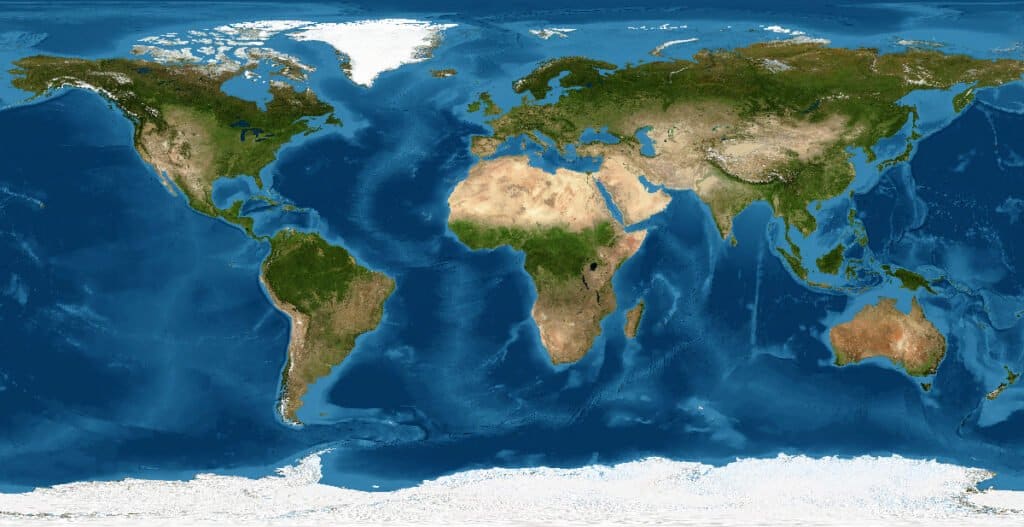
Islands are outside continental landmasses.
©Viacheslav Lopatin/Shutterstock.com
An island is not a continental landmass. After all, the major continental landmasses of Oceania, the Americas, or Afro-Eurasia are much larger than and particular island on its own. That is why we are going to separate the list and only look at islands that are nations rather than continents.
However, the largest landmasses would be the following in order:
- Afro-Eurasia
- Americas
- Antarctica
- Australia (the other portions of Oceania would be absorbed into the Afro-Eurasia)
With that settled, we can now take a close look at the largest islands that exist around the world today.
The 15 Largest Islands in the World

A group of islands near a coastline.
©Ajan Alen/Shutterstock.com
The islands on this list range from 42,458 miles (about the size of Mississippi) to 822,720 miles (larger than Alaska). In addition, you might be surprised how populated some of these islands are. One even has close to 150 million people on it! Let’s dive in to each island from 15th largest to first.
15. Luzon
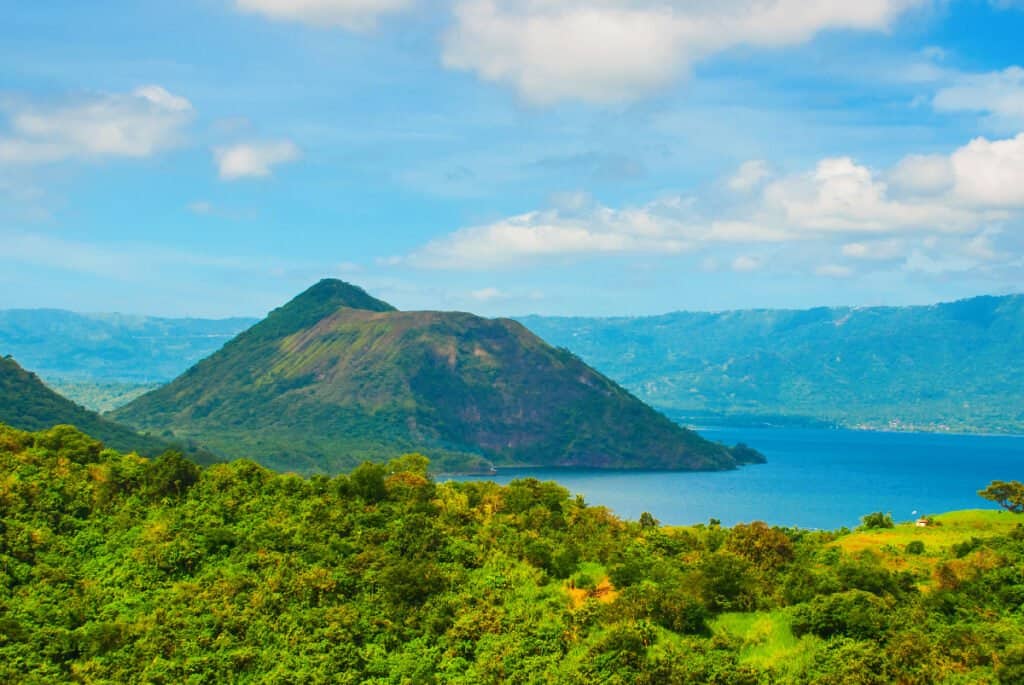
Luzon is a highly populated island
©Anna ART/Shutterstock.com
| Area (Square Miles) | Location | Population |
| 42,458 | Philippines | 64,260,312 |
The island of Luzon is the largest one in all of the Philippines. This is also the most populous island in the entire nation, and it’s part of a major island group that includes many people and ethnic groups. This island is the fourth most populous one in the world, and it has many cities including the capital city of Manila. The island is located in Southeast Asia.
14. North Island
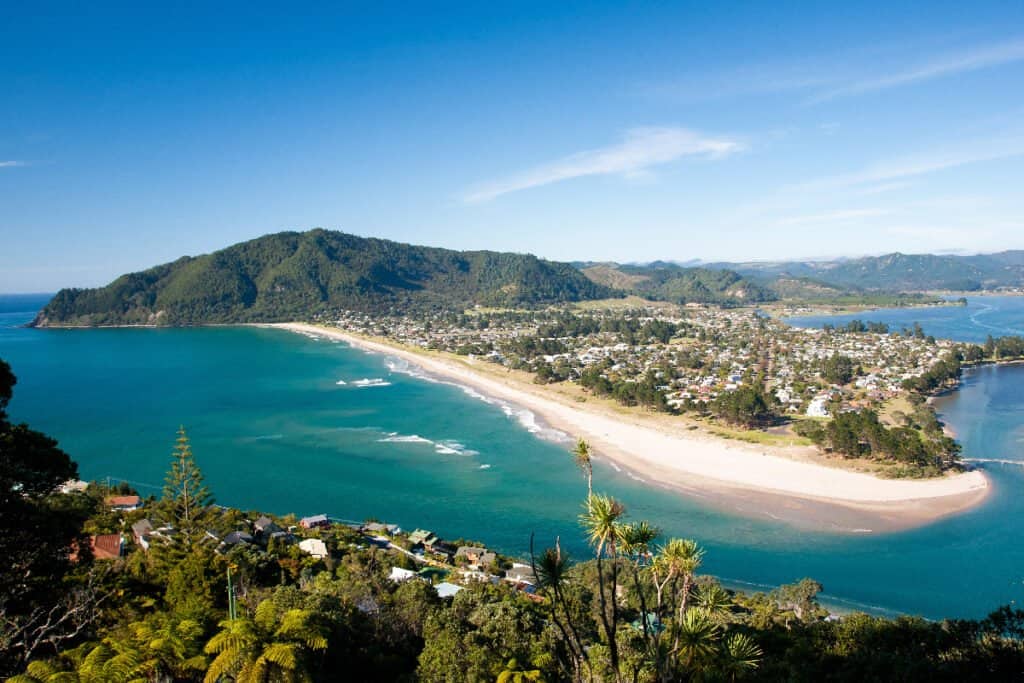
North Island is the northern half of New Zealand
©ian woolcock/Shutterstock.com
| Area (Square Miles) | Location | Population |
| 43,082 | New Zealand | 3,925,000 |
Te Ika-a-Maui is the official name of the North Island in New Zealand. The nation is split into two large islands and then several hundred smaller ones. Despite being smaller than the South Island by a fair margin, this island houses many more people compared to the other. New Zealand’s capital, Wellington, is located on this island along with several other cities and urban areas.
13. Java

Java is the most populous island in the entire world
©real Denis Feldmann/Shutterstock.com
| Area (Square Miles) | Location | Population |
| 53,589 | Indonesia | 147,795,436 |
The Indonesian island called Java is the island with the greatest population with over 140 million people calling this area home. The island is home to over 50% of the country’s entire population. Java is home to volcanoes, lush forests, and plains, making it ecologically unique. The island is a cultural and religious melting pot that features people with many beliefs such as Buddhism, Shaivism, and Islam.
12. South Island
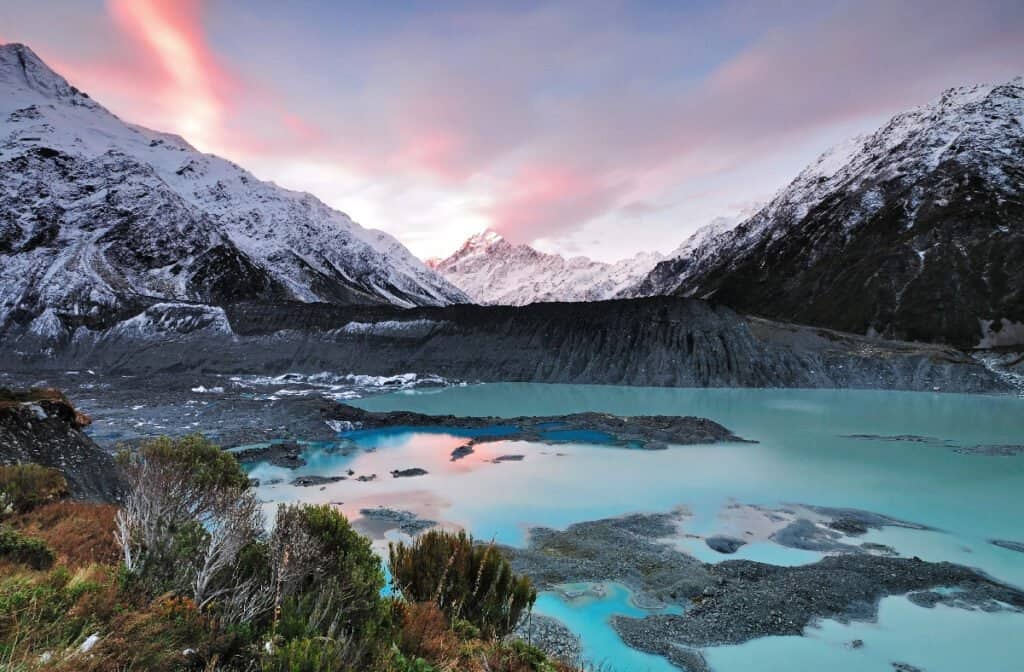
South Island is just a portion of New Zealand
©Nokuro/Shutterstock.com
| Area (Square Miles) | Location | Population |
| 56,308 | New Zealand | 1,196,000 |
The South Island of New Zealand is larger than the North Island, but it is not nearly as populous. The official name of this island is Te Waipounamu. This island is a popular tourist attraction owing to the amazing ski areas and its settings in the Lord of the Rings series. The island is filled with national parks and protected areas that are beautiful or culturally significant.
11. Sulawesi
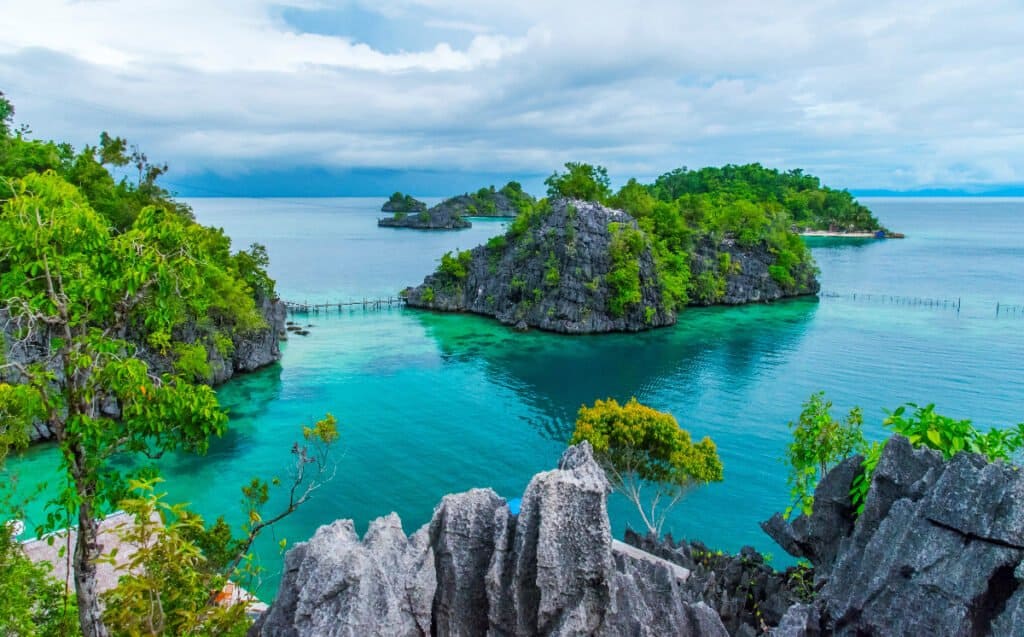
Sulawesi is one of several large islands comprising Indonesia
©krisbiantoandy/Shutterstock.com
| Area (Square Miles) | Location | Population |
| 69,761 | Indonesia | 19,896,951 |
Sulawesi is one of the four Greater Sunda Islands that are located in Indonesia. This island is highly populated with over 19 million people living throughout the land. The land is home to Mount Tongkoko, a volcano, a volcano that has been dormant for centuries. The island continues to gain new citizens and contains about 7% of the population of Indonesia.
10. Ellesmere Island

As of 2020, Ellesmere Island is home to the geomagnetic North Pole
©iStock.com/1127470616
| Area (Square Miles) | Location | Population |
| 75,767 | Canada | 191 |
Canada’s Ellesmere Island is the island located furthest north in the country. Although it is the 10th largest island in the world, it’s only slightly smaller than Great Britain. Although it’s quite large, the island is only home to about 200 people due to its harsh environment. The northernmost settlement in the world is called Alert, and it’s located on this island although it is not used as a military base any longer.
9. Great Britain

Great Britain is the largest portion of the United Kingdom
©RobertWade3003/Shutterstock.com
| Area (Square Miles) | Location | Population |
| 80,823 | U.K. | 60,800,000 |
Great Britain is a large and highly populated island that is located off the northwest coast of continental Europe that houses most the United Kingdom. This island is believed to have been connected to continental Europe until about 8,000 -10,000 years ago. Great Britain is the world’s third most populous island in existence today, and its population is still on the rise.
8. Victoria Island

Victoria Island is named for Queen Victoria
| Area (Square Miles) | Location | Population |
| 83,897 | Canada | 2,162 |
Victoria Island is another large island that is located in Canada. Like Ellesmere Island, this one is very sparsely populated with only 2,162 people living on it. The island was named for Queen Victoria, and it’s somewhat shaped like a maple leaf, a symbol for Canada. The island is very far north in the Arctic Archipelago, and it’s close to the Northwest Territories of Canada.
7. Honshu
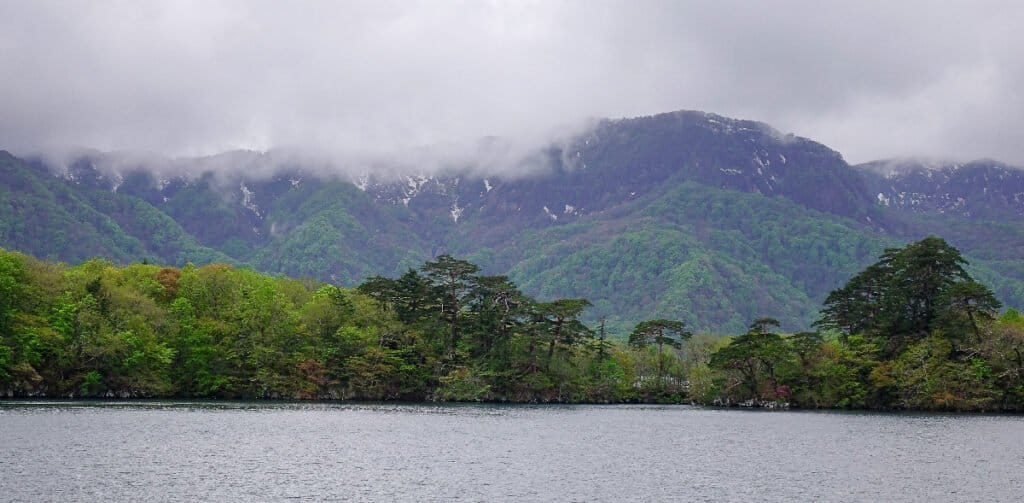
Honshu is home to many major cities, including Tokyo
©Phuong D. Nguyen/Shutterstock.com
| Area (Square Miles) | Location | Population |
| 87,200 | Japan | 104,000,000 |
Honshu is the island in Japan with the highest population of people, totaling over 100 million individuals and over 80 percent of the total population. Honshu is home to Tokyo as well as many other large cities and prefectures. The area is known for its amazing infrastructure that allows so many people to live and thrive in the area. Also, the island is getting bigger due to land reclamation projects happening.
6. Sumatra

The rainforests in Sumatra are home to many endangered species
©Syukri Erwin/Shutterstock.com
| Area (Square Miles) | Location | Population |
| 171,068 | Indonesia | 58,557,000 |
The island of Sumatra is another large island located in Indonesia. The island is interesting because of its amazing rainforests and unique animal species like the Sumatran Tiger and Sumatran Elephant. Unfortunately, this area has undergone severe deforestation that has led to many animal species becoming extinct in recent years.
5. Baffin Island
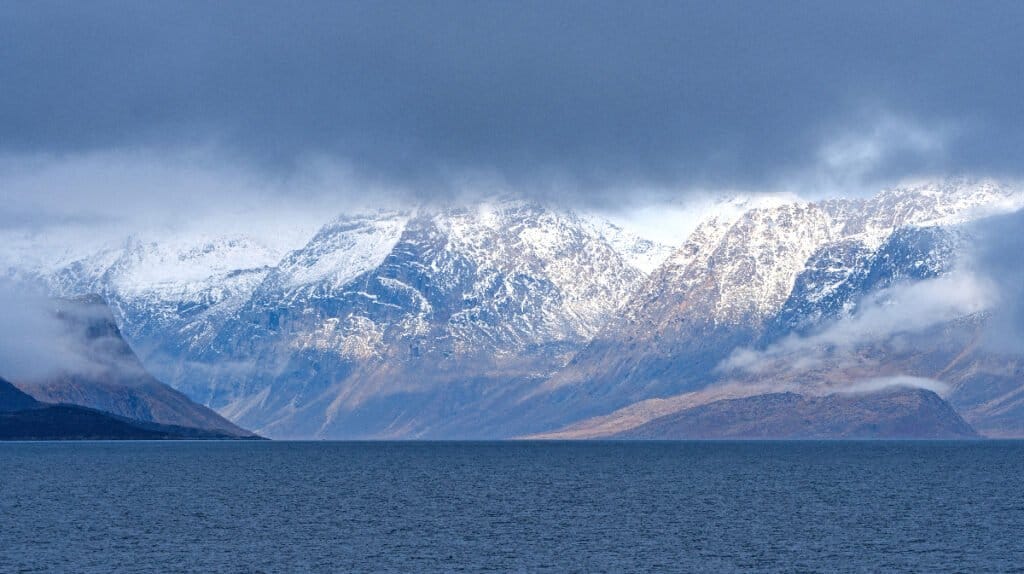
Canada’s Baffin Island is home to dangerous polar bears
©Wildnerdpix/Shutterstock.com
| Area (Square Miles) | Location | Population |
| 195,928 | Canada | 13,148 |
Baffin Island is the largest island in Canada, and it’s very far north. This island is home to many polar bears and ringed seals as well as nesting birds. The island is also home to people that work on the island in places such as iron mines. The small population of people on the island, just 13,000, is mostly Inuit individuals.
4. Madagascar

Madagascar is the largest island in
Africa
©Vaclav Sebek/Shutterstock.com
| Area (Square Miles) | Location | Population |
| 226,658 | Madagascar is its own nation | 27,690,000 |
Madagascar is an island off the east coast of Africa’s Mozambique. The large island is home to over 27 million people. This land has many different geological areas that include mountains, plains, lowlands, marshes, and more. The island is home to many plants and animals, some that are found in a few other places in the world. However, the island is facing severe environmental problems in the form of flooding, erosion, and pollution.
3. Borneo

Borneo is home to the oldest rainforests in the world
©BorneoRimbawan/Shutterstock.com
| Area (Square Miles) | Location | Population |
| 288,869 | Indonesia, Malaysia, Brunei | 23,720,000 |
Borneo is a very interesting country because it is divided into space into three different countries. Malaysia, Brunei, and Indonesia each own part of this island. As such, the area is very diverse in terms of social and cultural elements. The island contains some of the oldest rainforests in the entire world, and those rainforests are home to many animals like the Bornean orangutan. The biodiversity of Borneo is simply immense, and many species of plants and animals thrive on this island.
2. New Guinea
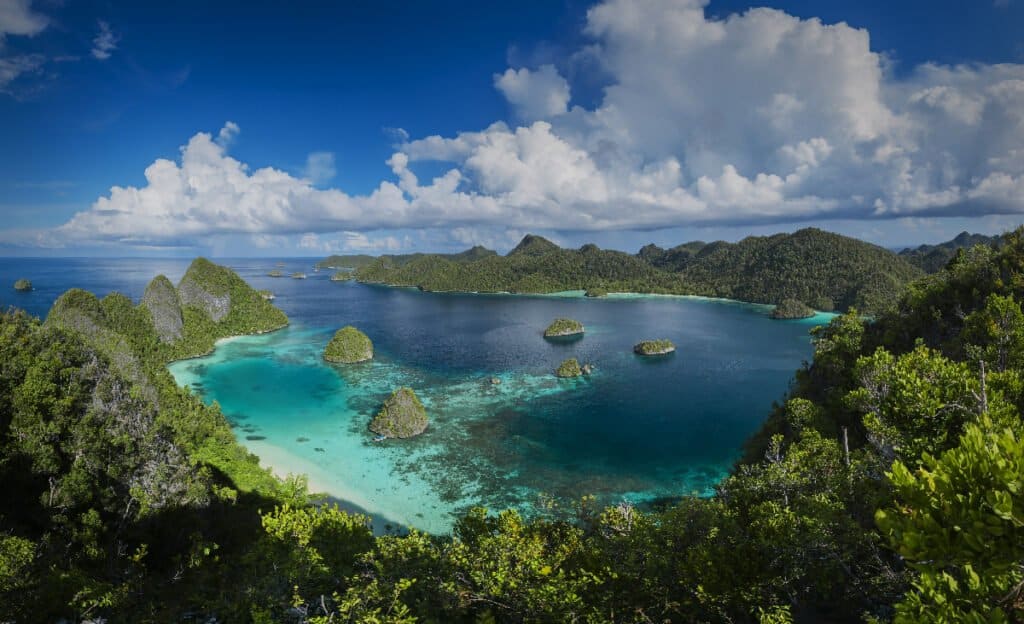
Indonesia and Papua New Guinea control part of the New Guinea island
©Strelyuk/Shutterstock.com
| Area (Square Miles) | Location | Population |
| 303,381 | Indonesia and Papua New Guinea | 14,800,000 |
The island of New Guinea is also divided between two countries. Namely, Indonesia and Papua New Guinea each control roughly half of the island. This island is the second-largest one in the entire world, and it has a large population to match with some 14 million people living here. New Guinea has incredible biodiversity as well as unique settlements of people living on it.
1. Greenland
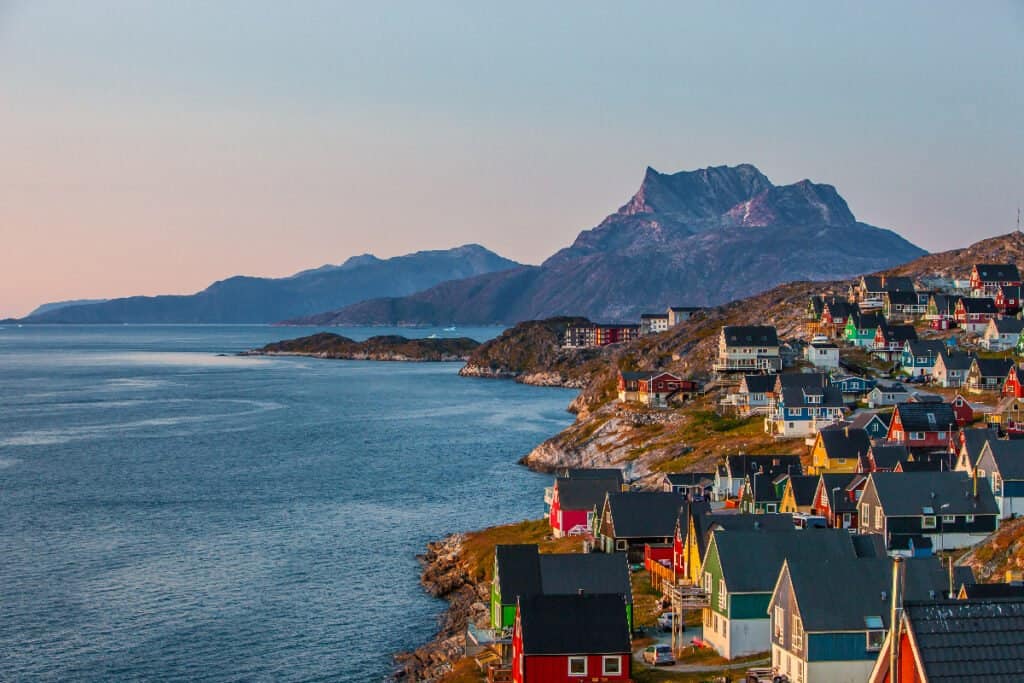
Denmark has made Greenland a province
©Kim Ries Jensen/Shutterstock.com
| Area (Square Miles) | Location | Population |
| 822,700 | Island province of Denmark | 56,732 |
Greenland is the largest island in the entire world. Although it’s the biggest island, it technically belongs to a much smaller country, Denmark. Despite the size difference, Greenland has fewer people than Denmark with 56,000 people compared with Denmark’s 5.8 million people. With their sizes combined, Greenland helps diminutive Denmark rank twelfth for the largest country in the world.
How Many People Live on Islands in the World?

Java is the most populated island in the world.
©Galyna Andrushko/Shutterstock.com
About 730 million people, over 10% of the world’s population, currently live on islands. Although some people might think that islands are small or sparsely populated, the truth is that they are widely populated by many people.
Java is the most populated island in the entire world, with a population that exceeds 147 million people despite the island only being the 13th largest island in the world. That should give you some insight into how large the island is and how many people live in a relatively small space.
A List of the Largest Islands in the World
Here is a list of the largest islands in the world:
| Rank | Island | Area (Square Miles) | Location | Population |
|---|---|---|---|---|
| 1 | Greenland | 822,700 | Province of Denmark | 56,732 |
| 2 | New Guinea | 303,381 | Indonesia and Papua New Guinea | 14,800,000 |
| 3 | Borneo | 288,869 | Indonesia, Malaysia, Brunei | 23,720,000 |
| 4 | Madagascar | 226,658 | Madagascar | 27,690,000 |
| 5 | Baffin Island | 195,928 | Canada | 13,148 |
| 6 | Sumatra | 171,068 | Indonesia | 55,557,000 |
| 7 | Honshu | 87,200 | Japan | 104,000,000 |
| 8 | Victoria Island | 83,897 | Canada | 2,162 |
| 9 | Great Britain | 80,823 | U.K. | 60,800,000 |
| 10 | Ellesmere Island | 75,767 | Canada | 191 |
| 11 | Sulawesi | 68,761 | Indonesia | 19,896,951 |
| 12 | South Island | 56,308 | New Zealand | 1,196,000 |
| 13 | Java | 53,589 | Indonesia | 147,795,436 |
| 14 | North Island | 43,082 | New Zealand | 3,925,000 |
| 15 | Luzon | 42,458 | Philippines | 64,260,312 |
Final Thoughts on the Largest Island in the World
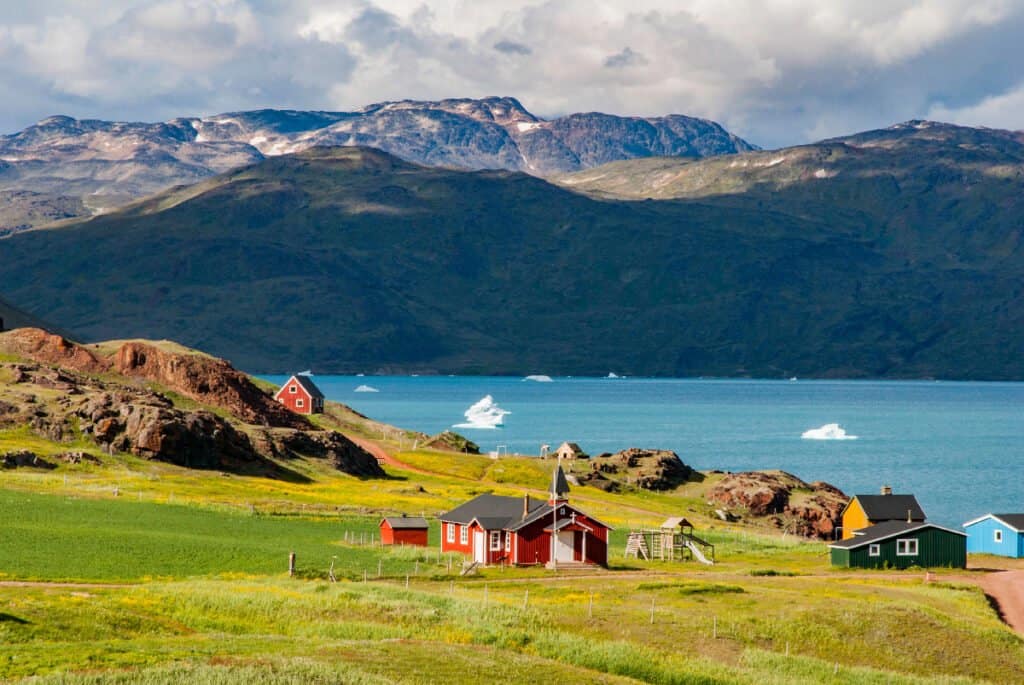
Greenland is the largest island in the world but has a mere fraction the world’s total island population.
©Beata Tabak/Shutterstock.com
Greenland is the largest island in the world, but it’s sparsely populated compared to many other islands that exist. With a mere 56,000 people living in this province of Denmark and over 147 million living on Java, it’s clear that size isn’t the only indicator of an island’s significance.
All in all, even though these islands are very large, they pale in comparison to the size of other major landmasses. That just shows how very large the Earth is and how much of the area humans have to live in.
The photo featured at the top of this post is © Romolo Tavani/Shutterstock.com
FAQs (Frequently Asked Questions)
What are the most beautiful islands in the world?
Some of the most beautiful islands in the world include:
- Bora Bora: An island where coral reefs form a barrier and create a crystalline lagoon. Bora Bora is famous for its huts that sit directly on the water.
- Vancouver Island: Home to two resident pods of orca whales and the densest concentration of cougars in the world.
- Palawan: A Philippine island that’s home to a large underground river and many coral reefs, sandy beaches, and diverse ecoregions.
What are the most remote islands in the world?
The most remote inhabited island in the world is generally considered to be Tristan Da Cunha in the Atlantic Ocean. Other remote islands include the Cocos Islands, Easter Island, and Desolation Island.
What is the largest island in the United States?
The largest island in the United States is Hawaii Island, or ‘The Big Island.’ Following Hawaii Island is Kodiak Island in Alaska and Puerto Rico.
Thank you for reading! Have some feedback for us? Contact the AZ Animals editorial team.




